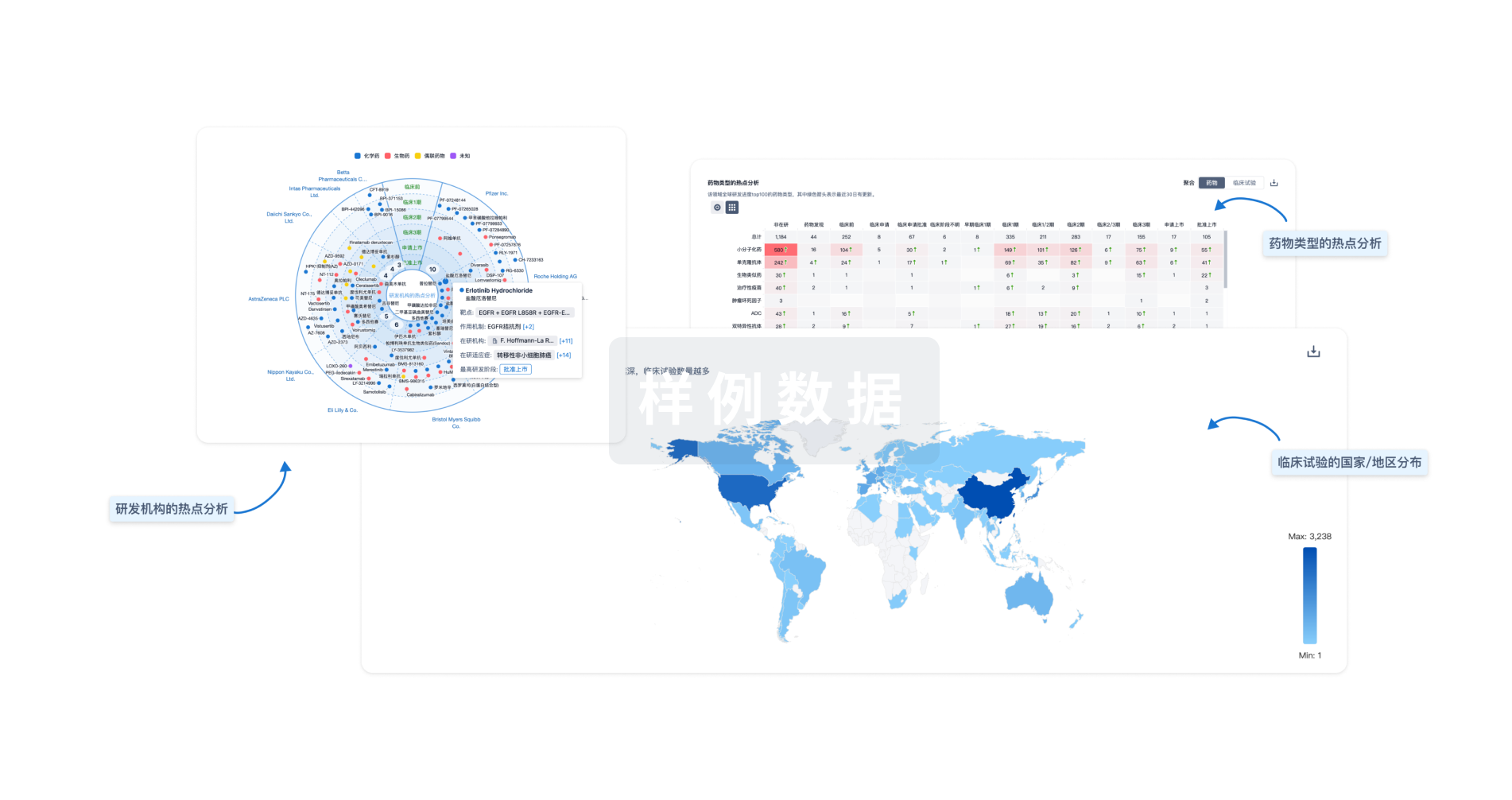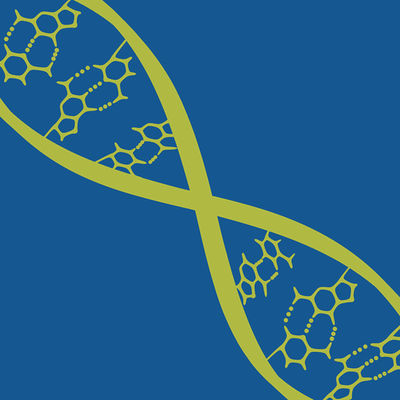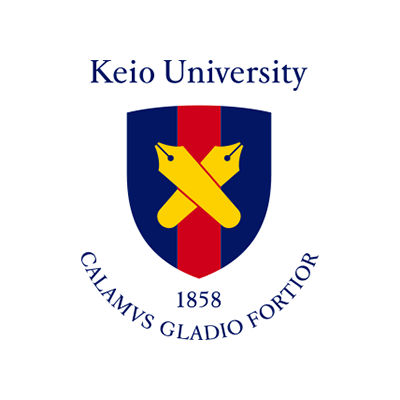预约演示
更新于:2025-05-07
Telangiectasia, Hereditary Hemorrhagic
遗传性出血性毛细血管扩张
更新于:2025-05-07
基本信息
别名 HEREDITARY HEMORRHAGIC TELANGIECTASIA、HHT、HHT - Hereditary haemorrhagic telangiectasia + [99] |
简介 An autosomal dominant vascular anomaly characterized by telangiectases of the skin and mucous membranes and by recurrent gastrointestinal bleeding. This disorder is caused by mutations of a gene (on chromosome 9q3) which encodes endoglin, a membrane glycoprotein that binds TRANSFORMING GROWTH FACTOR BETA. |
关联
17
项与 遗传性出血性毛细血管扩张 相关的药物作用机制 CSF-1R拮抗剂 [+4] |
在研适应症 |
最高研发阶段批准上市 |
首次获批国家/地区 美国 |
首次获批日期2014-10-15 |
作用机制 FGFR1拮抗剂 [+10] |
在研机构 |
原研机构 |
最高研发阶段批准上市 |
首次获批国家/地区 美国 |
首次获批日期2009-10-19 |
靶点 |
作用机制 VEGF-A抑制剂 |
原研机构 |
最高研发阶段批准上市 |
首次获批国家/地区 美国 |
首次获批日期2006-06-30 |
115
项与 遗传性出血性毛细血管扩张 相关的临床试验JPRN-UMIN000053576
Nationwide survey on visceral AVMs associated with Osler's disease (Hereditary Hemorrhagic Telangiectasia) (a multi-center, retrospective study) - Nationwide survey on visceral AVMs associated with Osler's disease (HHT)
开始日期2024-02-14 |
申办/合作机构 |
NCT06261333
Influence of Telangiectasia and Anemia on the Well-being and Quality of Life of Patients With Hereditary Hemorrhagic Telangiectasia (HHT).
Hereditary Hemorrhagic Telangiectasia (HHT), also known as Osler's disease, is a genetic disorder that leads to abnormal blood vessel formations. It primarily affects blood vessels in the skin, mucous membranes, and internal organs. The disease can be clinically diagnosed using the Curaçao criteria (1. Positive family history of HHT, 2. Recurrent and spontaneous epistaxis, 3. Multiple typical telangiectasias, 4. Organ involvement with vascular malformations, especially in the liver, lungs, gastrointestinal tract, or brain); if a patient meets at least 3 criteria, the diagnosis of HHT can be established.
Patients with HHT often have telangiectasias on their faces. Additionally, many patients suffer from anemia, which can result in a pale and potentially tired appearance. Patients with HHT may be less satisfied with their appearance due to the aesthetic changes in their faces and may also experience psychosocial impairment. To further investigate this, various validated questionnaires (FACE-Q©, PROMIS-Profile-29+2, EQ5D), as well as routinely collected clinical data (e.g., laboratory values including hemoglobin levels, Curaçao criteria, smoking status, alcohol consumption, and the Epistaxis Severity Score (ESS)) will be used.
Patients with HHT often have telangiectasias on their faces. Additionally, many patients suffer from anemia, which can result in a pale and potentially tired appearance. Patients with HHT may be less satisfied with their appearance due to the aesthetic changes in their faces and may also experience psychosocial impairment. To further investigate this, various validated questionnaires (FACE-Q©, PROMIS-Profile-29+2, EQ5D), as well as routinely collected clinical data (e.g., laboratory values including hemoglobin levels, Curaçao criteria, smoking status, alcohol consumption, and the Epistaxis Severity Score (ESS)) will be used.
开始日期2024-01-22 |
申办/合作机构 |
IRCT20100314003566N13
Determining the benefits and side effects of the Nd:YAG 1064 nm laser in order to achieve an effective pulse width with minimal side effects in the treatment of the face and lower limb telangiectasia
开始日期2023-12-22 |
100 项与 遗传性出血性毛细血管扩张 相关的临床结果
登录后查看更多信息
100 项与 遗传性出血性毛细血管扩张 相关的转化医学
登录后查看更多信息
0 项与 遗传性出血性毛细血管扩张 相关的专利(医药)
登录后查看更多信息
4,533
项与 遗传性出血性毛细血管扩张 相关的文献(医药)2025-06-01·Radiology Case Reports
Successful coil embolization of 3 pulmonary arteriovenous malformations using a gadolinium contrast agent in a patient with severe iodine allergy: A case report
Article
作者: Kamisako, Atsufumi ; Murotani, Kazuhiro ; Naka, Takahiro ; Ikoma, Akira ; Tamai, Kurumi ; Minamiguchi, Hiroki ; Mimura, Ryosuke ; Sonomura, Tetsuo ; Miyake, Yuichi
2025-05-01·Journal of Vascular and Interventional Radiology
Embolotherapy for Pulmonary Arteriovenous Malformations in the Pediatric Population with Hereditary Hemorrhagic Telangiectasias—A Retrospective Case Series
Article
作者: Misra, Sanjay ; Iyer, Vivek ; Mukhtar, Haseeb ; Bjarnason, Haraldur ; Bendel, Emily C ; Demirel, Nadir
2025-04-01·Journal of Medical Genetics
Arteriovenous malformation from a patient with JP-HHT harbours two second-hit somatic DNA alterations inSMAD4
Article
作者: DeBose-Scarlett, Evon ; Ressler, Andrew K ; Roberts, James W ; Marchuk, Douglas A ; Prickett, Kara K ; Gossage, James R ; Friday, Cassi
49
项与 遗传性出血性毛细血管扩张 相关的新闻(医药)2025-04-29
脑血管病是一类以脑部血管病变为基础,导致脑组织发生缺血性或出血性损伤的疾病,具有高发病率、高致残率和高死亡率等特点。在全球范围内,脑血管病已成为导致死亡和长期残疾的主要原因之一,给患者及其家庭带来沉重负担。在中国,脑血管病的发病率和患病率呈逐年上升趋势,已成为公共卫生领域亟待解决的重要问题。类器官技术作为生物医学领域的重大突破,近年来发展迅速。类器官是具有一定组织结构和功能的微型器官模型,由干细胞或组织细胞在体外培养形成,能够模拟体内器官的发育、生理和病理过程。自2009年Hans Clevers团队首次成功培育出肠道类器官以来,类器官技术在多个器官系统的研究取得了显著进展。在脑血管疾病领域,类器官技术展现出了广阔的应用前景。通过构建脑类器官,研究人员能够在体外模拟脑血管疾病的发病机制,深入探究血管生成、神经血管单元相互作用等关键环节,为疾病的早期诊断、治疗靶点的发现以及药物研发提供全新的研究平台。尽管类器官技术在脑血管疾病研究领域具有较大潜力,但目前仍面临诸多挑战,其中血管化问题是制约其进一步发展的关键瓶颈。血管化对于类器官的生长、成熟和功能维持至关重要,缺乏完善的血管系统将导致类器官内部营养和氧气供应不足,代谢废物堆积,影响其长期存活和功能发挥。鉴于类器官技术在脑血管疾病研究与治疗领域展现出的潜力以及面临的挑战,本文系统阐述类器官技术在脑血管疾病领域的应用进展,深入探讨血管化脑类器官模型的构建方法,分析基于这些模型的药物研究与疾病机制研究成果,并评估其在脑血管疾病治疗方面的应用前景。1、血管化脑类器官模型的构建体内移植生成血管化脑类器官的首要方法之一是将其植入动物模型中。一项研究采用慢病毒载体标记绿色荧光蛋白(GFP)的人类胚胎干细胞(hESCs)培育大脑类器官胚状体(EBs),并在体外精心培养40~50 d,确保这些类器官具备清晰的胚体边界、径向排列的神经上皮及定义明确的芽。经严格筛选后,这些类器官被移植至成年免疫缺陷小鼠(NOD-SCID)的压后皮质区域。移植手术包括在小鼠大脑中制造一个空腔,将类器官植入其中,并用盖玻片和粘合剂密封,形成颅窗,图1展示了小鼠体内移植类器官模型构建的示意图。▲体内移植类器官模型示意图术后7~10 d,宿主血管开始侵入类器官,术后14 d可形成广泛的血管网络,血管化成功率达到(85.4±6.4)%,且这些血管均源自宿主。这个过程不仅显著提高了类器官的存活率,还促进了神经元的渐进分化和成熟、神经胶质的生成、小胶质细胞的整合,以及轴突向宿主大脑多个区域延伸。通过体内双光子成像技术,研究人员直接观察到移植物中功能性神经元网络和血管的存在。进一步的体内细胞外记录结合光遗传学技术揭示了移植物内神经元的活动,并证实了移植物与宿主大脑之间功能性突触连接的建立。上述发现表明,将脑类器官移植至富含血管的微环境中,可有效利用宿主血管的天然生成能力,实现类器官的血管化和功能化。总体而言,脑类器官的体内移植策略成功克服了坏死核心的限制,通过提供有效灌注显著提升了类器官的活力。体内移植类器官模型在一定程度上弥补了体外类器官模型中血管系统与完整人类大脑生理环境相互作用的缺失,但这一技术目前仍面临诸多问题。首先,模型中的血管成分源自鼠类,这一特点限制了其在人类应用的可移植性,从而阻碍了模型向临床转化的进程。其次,目前观察到的体内移植类器官模型类似于晚期胚胎或早期出生后的组织,其成熟度和空间结构仍与正常血管存在差距。此外,如何精确监测和量化模型的功能表现,尤其是复杂的血流变化、血管壁的应力和变形,仍是技术上的一大难题。体外培养 类器官的内皮化生成血管化脑类器官的关键挑战是协调不同胚层和细胞命运的诱导因子,这些因子常存在相互抑制现象。因此,一些研究方案选择分别培养脑类器官和血管类器官。也有方法通过将非外胚层来源的细胞或其祖细胞直接引入脑类器官中,形成多谱系组装体。一项开创性研究首次尝试生成来源于同一患者的同源结构。该研究利用患者来源的人诱导多能干细胞(hiPSCs)分别生成脑类器官和内皮细胞(ECs),随后在分化后进行共培养。研究中通过无翅型整合位点(Wnt)信号激活诱导中胚层细胞,并采用骨形态发生蛋白4(BMP4)、血管内皮生长因子(VEGF)和成纤维细胞生长因子2(FGF2)分化为内皮祖细胞。在分化至第34天时,将脑类器官重新嵌入含内皮祖细胞的聚合Matrigel基质胶中,继续在体外培养3~5周,最终形成具有较强血管结构的类器官。尽管研究未对神经元区室的细胞结构进行详细描述,但类器官中出现了多条具有穿透性和灌注功能的血管。这些血管表达了人类ECs标志物分化簇31(CD31),证明患者来源的ECs能够成功用于脑类器官的血管化。此后,相关研究将hESCs或hiPSCs与人类脐静脉内皮细胞(HUVECs)共培养,成功构建了具有血管结构的脑类器官模型(vOrganoids)。在培养过程中,细胞首先聚集成胚状体样结构,随后经历神经诱导和分化。研究者发现HUVECs在vOrganoids中形成网状和管状结构,这些结构主要分布于脑室区/亚脑室区上方,而该区域正是神经干细胞和前体细胞的富集地。随着发育进程的推进,血管结构不断向新生神经元区域延伸,且这种状态可持续200 d以上。电生理学进一步检测显示,vOrganoids中存在自发兴奋性突触后电流、自发抑制性突触后电流以及双向电传输现象,表明vOrganoids内部具备化学和电突触。通过单细胞RNA测序分析,研究人员验证了vOrganoids在细胞类型和分子属性上与人类胎儿端脑具有高度相似性,并发现vOrganoids的发育速度相较于非血管化类器官更快。此外,体内移植实验结果证实,vOrganoids可与宿主脑组织实现良好整合,并与宿主血管系统建立了功能性连接。另一类脑类器官血管化策略则是通过基因改造,在脑类器官形成过程中诱导ECs分化。研究显示,从hESCs生成人类皮质类器官,并对其进行基因改造,可异位表达人类ETS突变体2(ETV2)。ETV2能够促使hESCs分化为ECs,这一过程不依赖特定的分化条件,也无需生长因子(如VEGF等)。实验中确定了最佳ETV2表达细胞比例(20%),并于第18天开始诱导ETV2表达,这样处理的类器官可有效形成血管样结构。这些结构不仅在形态上表现为ECs标志物的表达,且在功能上可支持氧气和营养物质的传输,减少细胞死亡,并促进神经元成熟。此外,这些血管化的类器官还展现出血脑屏障(BBB)特性,包括紧密连接、营养转运蛋白和跨内皮电阻表达增加。通过单细胞转录组分析,研究进一步证实了血管化可促进神经元成熟。该模型的一个重要特征是血管状结构被星形胶质细胞和周细胞包围,与人类神经血管单元的组成非常相似。这种单一转录因子介导的方法可跨胚层诱导血管化,并实现类器官中细胞命运诱导时间的精准控制。血管类器官融合作为一种创新性可选方案,一项研究提出了混合神经血管球体新策略,以实现脑类器官的有效血管化。研究者们在hiPSCs基础上独立培养了诱导神经祖细胞(iNPCs)和诱导内皮细胞(iECs)的细胞球体;随后,在两种球体的混合培养基中加入人间充质干细胞(MSC)和SB431542、LDN193189等试剂,形成iNPC-iEC-MSC融合球体。图2展示了体外球体融合类器官模型构建的示意图。▲体外球体融合类器官模型示意图在融合实验中,研究者们精心调整了培养基成分,发现5%的Geltrex基质胶和0.025 wt%的透明质酸能够显著促进球体融合,而高浓度的ROCKi Y27632则对融合过程产生了阻碍效果。通过一系列评估手段,包括细胞增殖、代谢活性检测、细胞因子分泌分析、神经与血管标志物的表达检测以及基因表达分析,研究者们观察到融合后的球体不仅成功促进了神经元和血管细胞的分化,还表现出与脑区特异性标记、基质重塑以及BBB特性相关的基因表达水平显著上调。此外,电生理特性测试进一步证实了融合球体衍生的细胞具备神经元功能和形态学特征。相较于传统的直接混合方法,球体融合策略展现出了显著优势。该策略避免了细胞分离和重新组合的过程,减少了细胞损失,同时允许创建具有精心设计隔间的混合球体结构,从而为研究人员提供了更精准的实验控制。此外,这种精确的排列方式通过组装皮质球体、血管球体和MSC,促进了VEGF-A的分泌,进而加速了皮质组织发育,并展现出层次分布潜力。生物工程技术尽管众多体外培养模型均出现分支血管,且其灌注能力也得到了预测或证实,但这些模型普遍存在一个缺陷,即缺乏主动血流。除此之外,在精确性、重复性、功能模拟以及实验应用等多个方面,也存在不同程度的限制。而生物工程类技术,如3D打印技术、微流控芯片技术等相继涌现与不断发展,为突破这些限制带来了新的希望与可能。微流控芯片技术是在微米尺度上精确操控流体,集成生物、化学、医学分析过程的技术,具有体积小、速度快、用量少等优点,适用于类器官血管化研究中精确控制微环境和细胞共培养。相关研究设计并制造了一种“开放式井”结构的微流控芯片,利用3D打印技术,并选用Dental SG树脂作为打印材料。通过特殊的清洗程序,确保了芯片的生物相容性。该芯片中央是类器官培养室,两侧设有微流控通道,二者通过50 μm的间隙相连,允许细胞和分子交换。血管细胞和脑类器官均从人类多能干细胞(hPSC)分化而来。在分化的第6天,血管细胞被接种至微流控通道中;而在分化的第5天,脑类器官则被接种至类器官培养室,实现了二者的共培养。在含有VEGF-A培养基的诱导下,血管细胞从微流控通道向类器官培养室伸出血管芽,形成有序的血管网络,并与脑类器官相互作用,最终形成整合的神经血管类器官。共培养实验结果表明,血管细胞的存在可能加速脑类器官的成熟过程。此外,生成的血管网络不仅结构完整,且具有功能性,可进行小分子灌注和通透性实验。相较于体内移植模型,各种体外类器官模型具有环境变量控制性强、灵活性和重复性高、伦理问题少等一系列优势。但体外模型无法完全再现体内复杂的生理和生物学条件、无法模拟真实的血液动力学环境,虽可通过培养不同类型的细胞模拟细胞群体和细胞间的交互作用,但其行为可能与体内复杂的组织环境不同,导致实验结果出现偏差。对于长时间体外培养的血管化脑类器官,如何保证组织的持续生长和功能稳定也是面临的一项技术难题。各种生物工程技术展现出了解决上述问题的潜力,但现阶段在应用方面仍不够成熟,需进一步深入研究。2、基于血管化脑类器官的药物研发BBB是维持中枢神经系统稳态的关键屏障,其通透性调控直接关系到药物跨屏障输送的效率以及在脑组织中的疗效,是中枢神经系统药物研究不可忽视的重要因素。血管化脑类器官在一定程度上再现了BBB的结构与功能,为中枢神经系统药物研发提供了一个全新平台。Saglam-Metiner等介绍了一种ICU患者芯片平台,该平台将hiPSCs分化的肥大细胞与脑类器官相结合,并在三维基质中进行培养,从而成功模拟了BBB与脑组织之间的相互作用。该平台利用一层覆盖有人类脑微血管ECs的膜模拟血管腔与组织室的分离,部分再现了BBB的结构和功能。研究发现,异丙酚能够激活肥大细胞、微胶质细胞和星形胶质细胞,进而增加一系列促炎基因的表达。同时,还伴随脑组织中缝隙连接蛋白、抑制性神经递质受体以及兴奋性神经递质受体表达水平升高。表明异丙酚可能通过激发神经炎症反应和改变神经递质平衡,进而影响神经元的功能和存活。相比之下,咪达唑仑对BBB的破坏作用更为显著,其能够降低ECs之间的电阻值、增加屏障通透性及损伤屏障完整性。此外,咪达唑仑还可激活肥大细胞和小胶质细胞,加剧谷氨酸相关的神经毒性,并诱导白细胞介素、干扰素等炎症因子过度表达,这些作用最终导致脑组织细胞凋亡明显增多。咪达唑仑还抑制了抑制性神经递质受体和兴奋性神经递质受体的表达,进一步扰乱神经递质平衡,从而对脑组织功能造成显著负面影响。与传统研究模型相比,血管化脑类器官技术结合微流控平台更贴近人脑的生理环境,可更准确地反映药物在脑部的作用机制,为中枢神经系统药物研究提供了强有力工具,有助于推动相关药物研发工作的深入开展。但BBB并非孤立存在,而是由ECs、星形胶质细胞、平滑肌细胞等共同作用维持,模拟这些周围细胞与ECs相互作用对于再现BBB功能同样重要,如何通过体外模型进一步复现BBB紧密连接的结构和选择性透过药物分子的功能是后续研究的重点。3、脑血管疾病机制的探究脑类器官模型在模拟人体组织三维结构及细胞间复杂相互作用方面更具精准性,为深入探究疾病发病机制带来了独特优势。近期,一项研究借助脑类器官芯片,为遗传性出血性毛细血管扩张症(HHT)1型发病机制的研究提供了新的视角与见解。HHT是一种以血管脆弱为显著特征的遗传性疾病,其中HHT 1型是由ENG(ENDOGLIN)基因突变所引发。该研究从1例罕见的嵌合HHT 1型患者体内获取细胞,成功生成了同源的突变型和正常型hiPSCs,并进一步将其分化为ECs,从而在体外模拟出HHT 1型血管状况。研究结果显示,在二维培养条件下,突变型和正常型ECs的功能表现相似。然而,当其置于三维模型中时,突变型ECs所形成的血管网络却呈现出诸多组织缺陷:血管密度明显降低、直径变小、ECs数量减少,且血管渗漏现象显著增加。此外,突变型ECs与脑血管周细胞之间的相互作用也受到损害,周细胞的覆盖率大幅下降,且与ECs的距离更远,进一步加剧了血管的脆弱性。荧光葡聚糖渗漏实验进行验证,证实突变型血管的渗漏程度更高,反映出其屏障功能出现明显受损。此外,另一项研究通过构建患者源性类器官,成功复制了脑海绵状畸形(CCM)的特征,为深入理解CCM的发病机制提供了重要见解。CCM是一种遗传性脑血管疾病,其特征是由众多薄壁血管组成的海绵状异常血管团,其易破裂出血,导致卒中和神经功能障碍。该研究观察到,CCM患者源性的BBB类器官中内皮通道异常扩大,且通道呈现背靠背排列,这一现象与体内CCM的病理特征高度相似。进一步分析显示,这些类器官中紧密连接蛋白和基底膜蛋白的表达显著降低,这表明BBB的完整性受到了破坏。单细胞RNA测序揭示了ECs中病变标记基因显著上调,以及血管生成相关基因表达增强,表明ECs的病理变化在CCM发病机制中占据主导地位。此外,研究还发现CCM患者的MSC向血管平滑肌细胞分化的潜能减弱,这种平滑肌细胞的发育损失可能是导致CCM发病的关键因素之一。4、脑血管疾病治疗的新策略类器官技术作为一种新兴的脑血管疾病治疗策略,正展现出较大发展潜力。2020年,一项研究首次探索了脑类器官技术在缺血性卒中治疗中的可行性和潜在机制。研究人员将培养了55 d的脑类器官移植至大鼠大脑中动脉闭塞模型中,发现脑类器官移植后不仅显著减小了脑梗死体积,还显著改善了神经功能,这种效果与脑类器官的多系分化能力密切相关。移植的脑类器官能够模拟体内皮质发育,分化出多种细胞类型,包括神经前体细胞、神经元和星形胶质细胞等,通过神经发生、突触重建、轴突再生和血管生成作用,促进脑损伤修复。此外,移植细胞可沿胼胝体广泛迁移并在受损区域长时间存活。研究还表明,卒中后6 h或24 h内移植类器官可显著减轻脑损伤并改善行为表现,而超过7 d则移植效果有限,这一研究为脑类器官作为一种新型缺血性卒中治疗策略提供了重要证据。随后,另一项研究在该领域进一步探索,尤其是脑类器官在长期组织修复和功能恢复中的作用。研究人员利用hPSC诱导生成脑类器官,并将其移植至NOD-SCID小鼠脑梗死核心与梗死周边交界处,数月后类器官在脑梗死核心区域内可长期存活,分化为目标神经元,形成与宿主神经网络相连接的功能性突触,恢复受损脑组织结构。移植的类器官在梗死区域内分化为成熟的谷氨酸能神经元,还通过轴突延伸连接至远端脑区,整合至宿主神经回路。这种结构修复和功能整合体现在小鼠行为改善上,包括感知和运动功能的恢复。与单一细胞移植相比,脑类器官移植表现出更高的细胞存活率、更强的组织修复能力和更优越的神经功能恢复效果。这一研究完善了脑类器官移植的实施方法,证明其可重建梗死组织并恢复卒中后功能障碍。由此可见,脑类器官为脑血管疾病的治疗开辟了一条极具潜力的新途径,其在缺血性卒中治疗领域的应用前景令人期待。5、小结与展望类器官技术为脑血管疾病的研究和治疗开辟了新视角,其在疾病机制探究、药物研发及治疗策略中的应用展现出了广阔潜力。通过体内移植、体外培养以及生物工程技术的创新发展,血管化脑类器官的构建逐步克服了传统模型在结构和功能上的局限,为研究神经血管单元相互作用、血管生成及BBB功能提供了更接近人体生理环境的实验平台。此外,这些模型在药物筛选中实现了中枢神经系统药物效应的精确评估,为复杂脑血管疾病的发病机制研究提供了突破性手段,在治疗策略方面展现出了重要潜力。尽管类器官技术取得了诸多进展,但仍面临诸多挑战。伦理问题和安全性评估是其临床应用中的关键问题,特别是涉及人类干细胞问题。人类干细胞的使用(特别是胚胎干细胞),涉及伦理问题,因其来源于胚胎,且在胚胎发育过程中可能导致生命终结。为确保其伦理合规性,所有使用人类干细胞的研究均必须严格遵守国际伦理规范,确保研究参与者知情同意,并保证数据的透明性。在安全性评估方面,类器官技术的临床转化面临细胞异质性、免疫反应、肿瘤发生风险等挑战。类器官在体外培养中的异质性可能导致不同患者之间的效果差异。因此,需通过严格的动物实验和长时间的安全性测试评估其临床应用风险。此外,类器官移植后可能引发免疫排斥反应、癌变风险等问题,需通过实验数据进一步验证,并制定详细的安全性评估标准。在技术实现方面,体外类器官模型在控制环境变量和伦理问题方面具有优势,但难以完全再现体内复杂的生理环境和血液动力学,且长期培养时如何维持功能稳定仍是难题。体内移植模型虽然弥补了这一缺陷,但血管成分源自鼠类,限制了其在人体的临床应用。此外,这些模型的成熟度和血管功能尚存在差距,血管化效率和主动灌注能力的进一步优化亟待解决。BBB的模拟也面临挑战,特别是如何有效复现紧密连接和药物透过性方面,需开展进一步研究和技术突破。结合微流控技术及高通量3D打印等前沿手段,未来有望进一步提升类器官模型的精确性和功能性。特别是在脑血管疾病领域,探索血管化脑类器官在个性化治疗方面的应用潜力,如针对特定患者设计定制化的药物筛选平台和治疗方案,将推动精准医疗的发展。与此同时,随着生物工程技术的进步和多学科协作的深化,类器官技术有望逐步实现从实验室到临床的转化,为脑血管疾病的诊疗带来革命性突破。相关阅读中风“治愈率”提高53%!浙附二院楼敏团队研究登NEJM:这些患者治疗“时间窗”延长至24小时!脑萎缩速度下降57%,认知功能改善!《自然-医学》:干细胞疗法为阿尔茨海默病带来治疗希望心梗前35年或已出现!年轻血脂高,增加这些心脑血管疾病风险欢迎投稿:学术成果、前沿进展、临床干货等主题均可,点此了解投稿详情。参考资料(可上下滑动查看)[1]Walter K. What is acute ischemic stroke?[J]. JAMA,2022,327(9): 885.[2]Montaño A,Hanley D F,Hemphill J C,3rd. Hemorrhagic stroke[J]. Handb Clin Neurol,2021,176: 229-248.[3]Goldstein L B. Introduction for focused updates in cerebrovascular disease[J]. Stroke,2020,51(3): 708-710.[4]Li Y,Zeng P M,Wu J,et al. Advances and applications of brain organoids[J]. Neurosci Bull,2023,39(11): 1703-1716.[5]Sato T,Vries R G,Snippert H J,et al. Single Lgr5 stem cells build crypt-villus structures in vitro without a mesenchymal niche[J]. Nature,2009,459(7244): 262-265.[6]Song L Q,Yan Y W,Marzano M,et al. Studying heterotypic cell-cell interactions in the human brain using pluripotent stem cell models for neurodegeneration[J]. Cells,2019,8(4): 299.[7]Orlova V V,Nahon D M,Cochrane A,et al. Vascular defects associated with hereditary hemorrhagic telangiectasia revealed in patient-derived isogenic iPSCs in 3D vessels on chip[J]. Stem Cell Reports,2022,17(7): 1536-1545.[8]Saglam-Metiner P,Yanasik S,Odabasi Y C,et al. ICU patient-on-a-chip emulating orchestration of mast cells and cerebral organoids in neuroinflammation[J]. Commun Biol,2024,7(1): 1627.[9]Hofer M,Lutolf M P. Engineering organoids[J]. Nat Rev Mater,2021,6(5): 402-420.[10]Mansour A A,Gonçalves J T,Bloyd C W,et al. An in vivo model of functional and vascularized human brain organoids[J]. Nat Biotechnol,2018,36(5): 432-441.[11]Wilson M N,Thunemann M,Liu X,et al. Multimodal monitoring of human cortical organoids implanted in mice reveal functional connection with visual cortex[J]. Nat Commun,2022,13(1): 7945.[12]Pham M T,Pollock K M,Rose M D,et al. Generation of human vascularized brain organoids[J]. Neuroreport,2018,29(7): 588-593.[13]Kistemaker L,van Bodegraven EJ,de Vries HE,Hol EM. Vascularized human brain organoids: current possibilities and prospects[J]. Trends Biotechnol,2025,S0167-7799(24)00357-3.doi: 10.1016/j.tibtech.2024.11.021. Epub ahead of print.[14]Cakir B,Xiang Y F,Tanaka Y,et al. Engineering of human brain organoids with a functional vascular-like system[J]. Nat Methods,2019,16(11): 1169-1175.[15]Wörsdörfer P,Dalda N,Kern A,et al. Generation of complex human organoid models including vascular networks by incorporation of mesodermal progenitor cells[J]. Sci Rep,2019,9(1): 15663.[16]Shi Y C,Sun L,Wang M D,et al. Vascularized human cortical organoids (vOrganoids) model cortical development in vivo[J]. PLoS Biol,2020,18(5): e3000705.[17]Song L Q,Yuan X G,Jones Z,et al. Assembly of human stem cell-derived cortical spheroids and vascular spheroids to model 3-D brain-like tissues[J]. Sci Rep,2019,9(1): 5977.[18]Tan S Y,Feng X H,Cheng L K W,et al. Vascularized human brain organoid on-chip[J]. Lab Chip,2023,23(12): 2693-2709.[19]Salmon I,Grebenyuk S,Abdel Fattah A R,et al. Engineering neurovascular organoids with 3D printed microfluidic chips[J]. Lab Chip,2022,22(8): 1615-1629.[20]Xu C,Alameri A,Leong W,et al. Multiscale engineering of brain organoids for disease modeling[J]. Adv Drug Deliv Rev,2024,210: 115344.[21]Dao L,You Z,Lu L,et al. Modeling blood-brain barrier formation and cerebral cavernous malformations in human PSC-derived organoids[J]. Cell Stem Cell,2024,31(6): 818-833.e11.[22]Wang S N,Wang Z,Xu T Y,et al. Cerebral organoids repair ischemic stroke brain injury[J]. Transl Stroke Res,2020,11(5): 983-1000.[23]Cao S Y,Yang D,Huang Z Q,et al. Cerebral organoids transplantation repairs infarcted cortex and restores impaired function after stroke[J]. NPJ Regen Med,2023,8(1): 27.[24]Zheng F Y,Xiao Y M H,Liu H,et al. Patient-specific organoid and organ-on-a-chip: 3D cell-culture meets 3D printing and numerical simulation[J]. Adv Biol (Weinh),2021,5(6): e2000024.免责声明:本文仅作信息交流之目的,文中观点不代表药明康德立场,亦不代表药明康德支持或反对文中观点。本文也不是治疗方案推荐。如需获得治疗方案指导,请前往正规医院就诊。分享,点赞,在看,传递医学新知
2025-03-24
·生物世界
撰文丨王聪
编辑丨王多鱼
排版丨水成文
造血干细胞移植后的同种异体 NK 细胞过继移植显示出良好的移植物抗白血病疗效和良好的安全性。尽管同种异体 NK 细胞疗法(包括 CAR-NK 细胞疗法)在某些血液系统恶性肿瘤中已显示出临床益处,但其在实体瘤中的临床疗效仍有限,这是由于它们在肿瘤微环境(TME)中的归巢和功能效率低下所致。
此外,转化生长因子β(TGFβ)和激活素 A(activin A)抑制 NK 细胞的功能和增殖,限制了 NK 细胞疗法的疗效。
2025 年 3 月 21 日,西班牙庞培法布拉大学的研究人员在 Nature 子刊 Nature Immunology 上发表了题为:Enhancing human NK cell antitumor function by knocking out SMAD4 to counteract TGFβ and activin A suppression 的研究论文。
该研究表明,敲除 SMAD4 基因,能够通过对抗转化生长因子β(TGFβ)和激活素 A(activin A)对人类 NK 细胞的抑制作用,增强人类 NK 细胞的抗肿瘤功能。
大多数实体瘤对 NK 细胞的渗透性较差,部分原因是肿瘤微环境(TME)中的肿瘤细胞和其他调节细胞产生的抑制性细胞因子——转化生长因子β(TGFβ)的影响。
活化的 TGFβ 与 TGFβ Ⅱ型受体二聚体(TGFβRII)结合,随后募集并激活Ⅰ型受体(TGFβRI),形成四聚体受体复合物。经典的信号传导始于 SMAD2 和 SMAD3 受体的磷酸化,随后它们与 SMAD4 形成复合物并转移到细胞核,在那里它们调节细胞类型特异性转录因子、共激活因子和共抑制因子的活性。此外,SMAD2/SMAD3 还能与包括转录中介因子 1γ(TIF1γ 或 TRIM33)、IKKα 或 DROSHA 在内的其他伙伴相互作用,从而调节造血细胞或上皮细胞中 TGFβ 依赖性的细胞增殖和迁移。除了 SMAD2/SMAD3 之外,TGFβ 还能以一种依赖于环境的方式通过丝裂原活化蛋白激酶、PI3K/Akt 以及小 GTP 酶来传递信号。
在 NK 细胞中,TGFβ 通过依赖于 SMAD2/SMAD3/SMAD4 的信号传导途径限制干扰素γ(IFNγ)的产生和细胞毒性,同时诱导组织驻留标志物(例如 Hobit、CD103、CD49a 和 TRAIL)的表达,且这一过程独立于 SMAD4。TGFβ 还能抑制 NK 细胞的增殖以及活化受体(NKp30 和 NKG2D)的表达,尽管其中的信号传导中间体尚不清楚。
除了 TGFβ 外,SMAD4 还参与 TGFβ 超家族其他成员的信号传导,包括激活素(activin)和骨形态发生蛋白(BMP)。而激活素和骨形态发生蛋白对 NK 细胞抗肿瘤功能的影响研究甚少。
在临床前研究中已对多种 TGFβ 通路抑制剂进行了评估,其中几种已推进到临床开发阶段。然而,系统性使用 TGFβ 抑制剂表现出依赖于肿瘤微环境和肿瘤类型的效果,通常需要与细胞毒性治疗(例如化疗或免疫治疗)联合使用,这会增加不良事件的风险。规避 TGFβ 对 NK 细胞功能抑制作用的替代方法,包括临床前研究中测试通过基因工程敲除 TGFβRII 或表达具有显性负性的 TGFβRII 。
尽管在小鼠中,Smad4 缺失会损害 NK 细胞的成熟和稳态,且与 TGFβ 无关,但在遗传性出血性毛细血管扩张症患者中,杂合性 SMAD4 功能缺失突变对 NK 细胞库没有显著影响。
因此,在这项新研究中,研究团队探索了在人类 NK 细胞中利用 CRISPR-Cas9 基因编辑技术敲除 SMAD4 ,是否能够增强其对 TGFβ 的抗性,并通过利用 TGFβ 驱动的组织驻留特性来增强其抗肿瘤效力。
研究结果显示,SMAD4 基因敲除的 NK 细胞对 TGFβ 和激活素 A 的抑制具有抗性,保持了其细胞毒性、细胞因子分泌以及 IL-2/IL-15 驱动的增殖能力。无论是作为单一疗法还是与肿瘤靶向治疗性抗体联合使用,它们都表现出增强 NK 细胞的肿瘤浸润能力和肿瘤生长控制能力。
值得注意的是,SMAD4 基因敲除的 NK 细胞的表现优于用 TGFβ 抑制剂处理的对照组 NK 细胞,这突显了维持 SMAD4 独立的 TGFβ 信号传导的益处。
SMAD4 基因敲除使多种 NK 细胞平台对 TGFβ 具有抗性,包括 CD19-CAR NK 细胞、干细胞来源的 NK 细胞和 ADAPT-NK 细胞。
总的来说,这些发现表明,敲除 SMAD4 是增强 NK 细胞抗肿瘤活性的一种通用且极具吸引力的新策略,为改进基于 NK 细胞的癌症免疫疗法开辟了新途径。
论文链接:
https://www-nature-com.libproxy1.nus.edu.sg/articles/s41590-025-02103-z
设置星标,不错过精彩推文
开放转载
欢迎转发到朋友圈和微信群
微信加群
为促进前沿研究的传播和交流,我们组建了多个专业交流群,长按下方二维码,即可添加小编微信进群,由于申请人数较多,添加微信时请备注:学校/专业/姓名,如果是PI/教授,还请注明。
点在看,传递你的品味
细胞疗法临床研究临床结果免疫疗法
2025-03-20
TX45 Phase 1b trial interim analysis demonstrated meaningful improvements in both left ventricular function and pulmonary hemodynamics in patients with Group 2 Pulmonary Hypertension in Heart Failure with Preserved Ejection Fraction (“PH-HFpEF”) Positive TX45 Phase 1b interim results support endpoints and patient population in ongoing APEX Phase 2 trial, with topline results expected in 2026 TX45 Phase 1b Part B trial enrolled its first subject with Heart Failure with reduced Ejection Fraction (“HFrEF”) in March 2025 Cash and cash equivalents of $141.2 million as of December 31, 2024 and February 2025 private placement gross proceeds of approximately $185.0 million, together expected to provide a cash runway into Q4’28
WATERTOWN, Mass., March 20, 2025 (GLOBE NEWSWIRE) -- Tectonic Therapeutic, Inc. (NASDAQ: TECX) (“Tectonic”), a clinical stage biotechnology company focused on the discovery and development of therapeutic proteins and antibodies that modulate the activity of G-protein coupled receptors (“GPCRs”), today announced financial results for the fourth quarter and full year ended December 31, 2024, and provided an overview of recent business highlights.
“2024 was an important year for Tectonic as we transitioned to a public company, and 2025 is already off to an excellent start,” said Alise Reicin, M.D., President and Chief Executive Officer of Tectonic. “We are very pleased to have recently reported positive interim results from our ongoing Phase 1b trial of TX45, which we believe supports the endpoints and patient population included in our ongoing APEX Phase 2 trial. We look forward to presenting detailed results at an upcoming medical meeting as well as continuing to advance both the APEX Phase 2 trial and Part B of the Phase 1b trial.”
Recent Business Highlights
Positive TX45 Phase 1b Part A Interim Trial Results: In January 2025, Tectonic announced positive interim results from Part A of the Phase 1b trial of TX45 in patients with Group 2 pulmonary hypertension in HFpEF. Results demonstrated that TX45 achieved 17.9% reduction in Pulmonary Capillary Wedge Pressure (“PCWP”) in the total study population of PH-HFpEF and >30% reduction in Pulmonary Vascular Resistance (“PVR”) in Combined pre- and post-capillary PH (“CpcPH”), a subpopulation with more severe disease. In addition, results demonstrated that TX45 achieved 17.4% improvement in Cardiac Output in the total study population of PH-HFpEF. Full results from the Phase 1b Part A trial are planned to be presented at a future medical meeting this year. Completed Approximately $185.0 Million Private Placement: In February 2025, Tectonic entered into a securities purchase agreement for a private investment in public equity financing (“PIPE”) that resulted in gross proceeds of approximately $185.0 million. Hosted Key Opinion Leader (KOL) Webinar: In December 2024, Tectonic hosted a KOL webinar featuring John R. Teerlink, MD, FHFSA (University of California San Francisco) and Raymond L. Benza, MD, FACC, FAHA, FACP (Icahn School of Medicine at Mount Sinai), who discussed the unmet medical need and current treatment landscape for patients with Group 2 PH-HFpEF. A replay of the webinar can be accessed here. Presented Positive TX45 Phase 1a Results at AHA 2024: In November 2024, detailed results from the Phase 1a trial of TX45 was presented in a poster at the American Heart Association (AHA) Scientific Sessions. A copy of the poster presentation can be found here.
Upcoming Milestones
Phase 1b Part B Results Expected 2H’25: Part B of the TX45 Phase 1b hemodynamic clinical trial evaluating single doses of TX45 in subjects with Pulmonary Hypertension in Heart Failure with reduced Ejection Fraction (“PH-HFrEF”) enrolled its first patient in March, with topline trial results expected in the second half of 2025. Ongoing TX45 APEX Phase 2 Clinical Trial Results Expected in 2026: The global, 24-week APEX Phase 2 clinical trial is a double-blind, randomized, placebo-controlled study designed to evaluate the safety and efficacy of TX45 administered subcutaneously in subjects with PH-HFpEF, with topline trial results expected in 2026. TX2100 GPCR Antagonist for Hereditary Hemorrhagic Telangiectasia (“HHT”) Phase 1 Initiation Expected Q4’25 or Q1’26: TX2100 is a GPCR targeting biotherapeutic being developed as a potential treatment for HHT, the second-most common genetic bleeding disorder. TX2100 remains on track to initiate a Phase 1 clinical trial in Q4’2025 or Q1’2026 following the conclusion of favorable IND enabling studies. A 4-week non-human primate (NHP) dose-range study with a functionally equivalent precursor to TX2100 showed no treatment-related toxicity at doses up to 100 mg/kg. A formulation supporting TX2100 SC dosing has been identified. Both IND enabling NHP GLP toxicology studies and technical development activities to generate GMP drug supply and drug product for TX2100 is expected to start in Q2’2025.
Overview of Financial and Operating Results
Cash Position: As of December 31, 2024, cash and cash equivalents were $141.2 million, compared to $159.1 million as of September 30, 2024. Tectonic anticipates that, based on current operating assumptions, its current cash and cash equivalents will provide a cash runway into Q4’28, including through key Phase 1b and Phase 2 readouts for TX45, and the progression of the HHT program into clinical development. Research and Development Expenses: Research and development expenses were $9.2 million for the three months ended December 31, 2024, as compared to $7.1 million for the three months ended December 31, 2023. The increase was primarily due to higher contract research organization and contract development manufacturing organization costs related to the progression of the Phase 1b and Phase 2 clinical trials of TX45, and early planning and development manufacturing activity for TX2100, respectively. Tectonic also incurred higher employee-related expenses due to an increase in non-cash stock-based compensation during the period. General and Administrative Expenses: General and administrative expenses were $4.8 million for the three months ended December 31, 2024, as compared to $2.3 million for the three months ended December 31, 2023. The increase was primarily a result of higher audit, legal and professional services to support operations as a public company. Tectonic also incurred higher employee-related expenses due to an increase in non-cash stock-based compensation during the period. Net Loss: For the three months ended December 31, 2024, the Company had a net loss of $12.4 million compared to a net loss of $7.9 million for the three months ended December 31, 2023.
About Group 2 Pulmonary Hypertension in HFpEF The World Health Organization has defined 5 groups of pulmonary hypertension (“PH”). Tectonic is focused on the Group 2 subtype, a condition that develops due to left-sided heart disease, specifically PH-HFpEF. In patients with PH-HFpEF, chronic heart failure leads to increased blood pressure in the pulmonary arteries, exerting severe strain on the right side of the heart, which adapts poorly to the increased pressure. This increased pulmonary pressure gradually causes worsening exercise capacity, shortness of breath and right-sided heart failure which can lead to death. PH-HFpEF is further segmented based on pulmonary hemodynamics into Isolated, post-capillary PH (“IpcPH”) and CpcPH. CpcPH is more severe, accounts for about one third to one half of the 1.4 million PH-HFpEF patients in the U.S. and is characterized by additional, abnormal changes to the pulmonary vasculature, leading to an increase in PVR. Although several Group 1 PH (Pulmonary Arterial Hypertension, “PAH”) medications have been explored in Group 2 PH, to date, no medications have been approved for its treatment.
About TX45, a long-acting Fc-relaxin fusion protein TX45 is an Fc-relaxin fusion protein with optimized pharmacokinetics and biophysical properties that activates the RXFP1 receptor, the G-protein coupled receptor target of the hormone relaxin. Relaxin is an endogenous protein, expressed at low levels in both men and women that is a pulmonary and systemic vasodilator with lusitropic, anti-fibrotic and anti-inflammatory activity. In normal human physiology, relaxin is upregulated during pregnancy where it exerts vasodilative effects, reduces systemic and pulmonary vascular resistance and increases cardiac output to accommodate the increased demand for oxygen and nutrients from the developing fetus. Relaxin also exerts anti-fibrotic effects on pelvic ligaments to facilitate delivery of the baby.
About TX2100 TX2100 is a GPCR-targeting biotherapeutic that is being developed to treat HHT, the second most common genetic bleeding disorder. In HHT, loss-of-function mutations in the BMP9/10-Endoglin-ALK1-SMAD4 signaling pathway lead to increased expression of factors that promote abnormal blood vessel formation. The abnormal blood vessel formations found in HHT, also known as telangiectasias and arterio-venous malformations or “AVMs”, are prone to spontaneous recurrent and severe bleeding episodes that can be life-threatening, yet there are no approved therapies to treat these patients. The target GPCR for TX2100 is a receptor for an angiogenic factor known to be upregulated in animal models of HHT. By blocking the signaling of this receptor, Tectonic anticipates it can reduce bleeding resulting from the abnormal blood vessel formation seen in HHT.
About Tectonic Tectonic is a clinical stage biotechnology company focused on the discovery and development of therapeutic proteins and antibodies that modulate the activity of GPCRs. Leveraging its proprietary technology platform called GEODe™ (GPCRs Engineered for Optimal Discovery), Tectonic is focused on developing biologic medicines that overcome the existing challenges of GPCR-targeted drug discovery and harness the human body to modify the course of disease. Tectonic focuses on areas of significant unmet medical need, often where therapeutic options are poor or nonexistent, as these are areas where new medicines have the potential to improve patient quality of life. Tectonic is headquartered in Watertown, Massachusetts. For more information, please visit www.tectonictx.com and follow on LinkedIn.
Forward-Looking Statements This press release contains “forward-looking statements” within the meaning of the “safe harbor” provisions of the Private Securities Litigation Reform Act of 1995. All statements in this press release other than statements of historical facts are “forward-looking statements. These statements may be identified by words such as “aims,” “anticipates,” “believes,” “could,” “estimates,” “expects,” “forecasts,” “goal,” “intends,” “may,” “plans,” “possible,” “potential,” “seeks,” “will” and variations of these words or similar expressions that are intended to identify forward-looking statements, although not all forward-looking statements contain these words. Forward-looking statements in this press release include, but are not limited to, statements regarding: the design, objectives, initiation, timing, progress and results of current and future preclinical studies and clinical trials of Tectonic’s product candidates, including the ongoing Phase 1b and Phase 2 clinical trials for its lead program, TX45, in Group 2 PH-HFpEF; the proposed initiation of a Phase 1 clinical trial for its development candidate for a second program in HHT, including its preclinical studies and anticipated endpoints; and the Company’s expected cash runway. These forward-looking statements are based on Tectonic’s expectations and assumptions as of the date of this press release. Each of these forward-looking statements involves risks and uncertainties that could cause Tectonic’s clinical development programs, future results or performance to differ materially from those expressed or implied by the forward-looking statements. Many factors may cause differences between current expectations and actual results, including: the potential that success in preclinical testing and earlier clinical trials does not ensure that later clinical trials will generate the same results or otherwise provide adequate data to demonstrate the efficacy and safety of a product candidate; the impacts of macroeconomic conditions, including the conflict in Ukraine and the conflict in the Middle East, heightened inflation and uncertain credit and financial markets, on Tectonic’s business, clinical trials and financial position; unexpected safety or efficacy data observed during preclinical studies or clinical trials; clinical trial site activation or enrollment rates that are lower than expected; Tectonic’s ability to realize the benefits of its collaborations and license agreements; changes in expected or existing competition; changes in the regulatory environment; the uncertainties and timing of the regulatory approval process; and unexpected litigation or other disputes. Other factors that may cause Tectonic’s actual results to differ from those expressed or implied in the forward-looking statements in this press release are identified under the heading “Risk Factors” in Tectonic’s quarterly report on Form 10-Q filed with the SEC on November 7, 2024, and in other filings that Tectonic makes and will make with the SEC in the future. Tectonic expressly disclaims any obligation to update any forward-looking statements contained herein, whether as a result of any new information, future events, changed circumstances or otherwise, except as otherwise required by law. For more information, please visit www.tectonictx.com and follow @TectonicTx on X (formerly Twitter) and LinkedIn.
Source: Tectonic Therapeutic
临床1期临床结果财报临床2期AHA会议
分析
对领域进行一次全面的分析。
登录
或

Eureka LS:
全新生物医药AI Agent 覆盖科研全链路,让突破性发现快人一步
立即开始免费试用!
智慧芽新药情报库是智慧芽专为生命科学人士构建的基于AI的创新药情报平台,助您全方位提升您的研发与决策效率。
立即开始数据试用!
智慧芽新药库数据也通过智慧芽数据服务平台,以API或者数据包形式对外开放,助您更加充分利用智慧芽新药情报信息。
生物序列数据库
生物药研发创新
免费使用
化学结构数据库
小分子化药研发创新
免费使用





